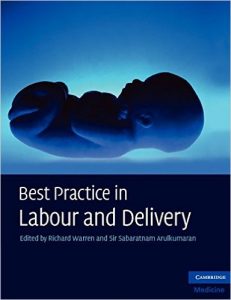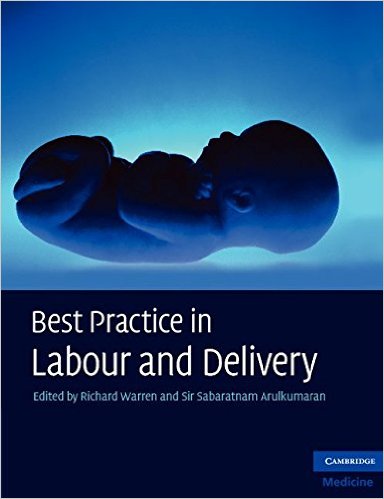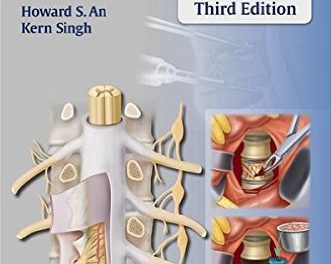 Editors: Richard Warren, and Sir Sabaratnam Arulkumaran
Editors: Richard Warren, and Sir Sabaratnam Arulkumaran
Publisher: Cambridge University Press – 362 pages
Book Review by: Nano Khilnani
”A clear understanding of what constitutes best practice will help to ensure the safety and health of mothers and babies through parturition,” write the editors of this book in the Preface.
What is ‘best practice’ is what this book is all about, taking into account the need to have a thorough, broad and deep knowledge of all aspects of the entire process of pregnancy and childbirth, not to mention also the necessity for practical training, experience, as well as insight for correct judgment, which are crucial elements to a successful practice in this specialty.
Drs. Warren and Arulkumaran point out importantly: “Whilst the encouragement of normality is implicit, abnormality in labour must be recognized promptly and, when necessary, must be appropriately managed to ensure the best outcome.”
It is for this purpose that this text was developed by these two editors with 48 contributors. In all, 50 specialists in obstetrics and gynecology – almost all of them in the United Kingdom, except one in Ireland – worked to provide this authoritative resource with 31 chapters for you, the practitioner or student. We list them below to give you an overview of its contents. The authors are mainly physicians and or professors, while some are fellows.
- Pelvic and fetal cranial anatomy and mechanism of labour
- The first stage of labour
- Analgesia and anesthesia in labour
- Intrapartum fetal surveillance
- Uterine contractions
- The management of intrapartum ‘fetal distress’
- Nutrition and hydration in labour
- Prolonged second stage of labour including difficult decision-making on operative vaginal delivery and caesarean section
- Operative vaginal deliveries: indications, techniques, and complications
- Caesarean deliveries: indications, techniques, and complications
- Breech and twin delivery
- Cord prolapsed and shoulder dystocia
- Antepartum hemorrhage
- Management of the third stage of labour
- Postpartum hemorrhage
- Acute illness and maternal collapse
- Episiotomy and obstetric perineal trauma
- Induction of labour
- Preterm prelabour rupture of membranes (pPROM)
- Preterm labour and delivery
- Labour in women with medical disorders
- Management of women with previous caesarean section
- Rupture of the uterus
- Management of severe pre-eclampsia / eclampsia
- Neonatal resuscitation and the management of immediate neonatal problems
- The immediate puerperium
- Triage and prioritization in a busy labour ward
- Risk management related to intrapartum care
- Teamworking, skills, and drills
- Cerebral palsy arising from events in labour
- Objective Structured Assessment of Technical Skills (OSATS) in obstetrics
Each chapter in this book provides broad coverage of the subject within the scope of the title, as well as detailed discussions of the topics. The organization of the materials in each chapter is very elegant. As an example, let us take a look at the structure of the content in chapter 1, Pelvic and fetal cranial anatomy and mechanism of labor:
The chapter begins with an Introduction, which is followed by these topics, and subtopics, interspersed with charts, drawings, graphs, photos, tables and other visuals:
Introduction
- The female pelvis
- The fetal skull
- Parturition, initiation of labour and myometrial contractility
- Labour and its mechanism
- Lie
- Presentation
- Position
- Asynclitism
- Attitude
- Abdominal and pelvic examination during pregnancy and labour
- Abdominal examination
- Pelvic examination
- Cervical effacement
- Stages of labour, its mechanism, and cardinal movements
- Mechanism of labour
- Engagement
- Descent
- Flexion
- Internal rotation
- Extension
- External rotation (restitution)
- Explusion
References
This is a great textbook encompassing many aspects of labor and delivery, written mainly for those who are in training for this medical specialty or preparing to take an examination, but also as a source of information and/or reference for established specialists.
It has been written by 50 experienced practitioners and knowledgeable professors of obstetrics and gynecology. It is evidence-based (as all medical books should be) and emphasizes close teamwork to deliver optimal clinical care.
This book contains up-to-date guidance from professional and oversight organizations including the Royal College of Obstetricians and Gynecologists (www.rcog.org-uk and the National Institute for Health and Clinical Excellence (www.nice.org.uk). This is an excellent and very valuable resource to own, study and use.
Editors:
Richard Warren is Consultant Obstetrician and Gynecologist at Norfolk and Norwich University Hospital in London, United Kingdom.
Sir Sabaratnam Arulkumaran is Professor and Head of the Department of Obstetrics and Gynecology at St. George’s University of London, United Kingdom.







